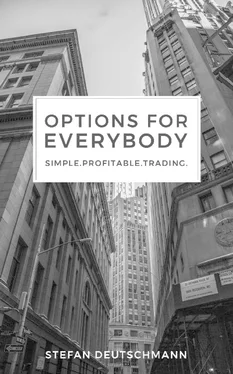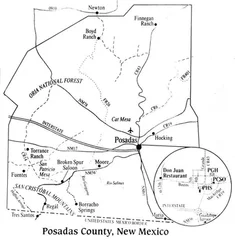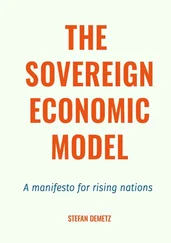The example above represents a call option. You start in a negative area because you have paid a certain premium. Remember, you can't lose more than this. You will also see the strike price, which is the price at which you bought the option. As soon as this is reached, the graph starts to rise and finally reaches the break even. Remember, this is always higher than your strike in a call, because you have to calculate strike + premium paid. As soon as this value is exceeded, you start to run into the profit zone.

Figure 5 : P/L-Diagram (Short-Call)
Let's look at another example. In this case it is a short call. As you can see, the potential profit is limited, but the risk is unlimited. Also note that this time the break even will play in your favor. To calculate this, you take again the strike price + premium taken. Only if this point is exceeded and the stock continues to rise, you begin to enter the loss zone. On the other hand, it is irrelevant how far the stock falls below your strike. You will never earn more than the premium earned, but you have unlimited risk "downwards".
Let's look at a more complex strategy - the Iron Condor.

Figure 6 : P/L-Diagram (Iron Condor)
In this case, we benefit if the share moves within a defined corridor. It is completely irrelevant whether it is at the upper or lower limit on expiration date. You will be allowed to keep the premium in any case. This is a great example of non-directional trading, as you don't have to have an opinion about the further course of the stock. To put it bluntly, you don't care whether it rises or falls as long as it stays within a certain fixed corridor. You also see the break even points and that you have a built-in loss limit. You can't lose more than the previously set amount. Yes, this is also possible with options.
But before this becomes too much for you, we will stop at this point. Strategies will be discussed later. The most important thing was to understand what P/L diagrams are made of and how to read them.
Remember:
P/L diagrams always consist of several components.
Profit/loss zone, strategy, strike price(s), break even(s).
They allow you to get a visual idea of the current strategy - "what happens at what point".
2.5 Repitition: Understanding Call Options
At this point we would like to repeat the essential components. Before you groan bored, it's fast and important. The basics really have to sit - just like in school. Every strategy in the options area consists of calls, puts or a combination of both. It is therefore of the utmost importance to master them. So let's go over what we've learned.
In the last sections, you learned that a stock option is actually just a contract to buy or sell shares at a fixed price for a limited period of time. The fixed time is called the expiration, and the fixed price is called the strike. One of the most important things to remember about options is that 1 contract represents 100 shares. So if you sell an option contract for 1.00 USD premium, that's actually 1.00 USD per share, so a total of 100 USD premium. An option contract of 0.50 USD costs 50 USD as buyer or brings you 50 USD as seller. Each option has its own price, which is derived from the Black-Scholes option price model. Black and Scholes received the Nobel Prize for it, but I'm not going to torture you with this formula now. More important is that you understand the ingredients and their effects. Memorizing formulas is only for know-it-alls (and students - we all had to go through that). The most important factors affecting option prices are the stock price and the time remaining before the option expires and volatility. For this reason, the options market is a derivative market for the actual share. However, other factors such as gamma play a role, but we will discuss these components later.
A call option is a contract that you can purchase. With this purchase, you can buy 100 shares at the predetermined strike price at the end of the contract. Just like a stock, you can also sell a call, obliging you to provide 100 shares at the end of the contract and at the chosen strike price if the stock price is above the chosen strike price.
If you own a call and the stock price is above the strike price, the value of the call also increases - it now has a higher value than before because you could buy the stock at a discount (the strike price). If the stock falls below your strike price, the value of the call option also drops. Why should anyone buy shares at a higher price than what the market is currently offering? Answer: Nobody would! If you have a call, you don't have to buy the stock before the contract expires. You could close the position and take the profit/loss without taking ownership of the stock. You could also choose to exercise the option and acquire ownership of the stock at the strike price at which the call was bought if the stock price is above your strike price. In principle, however, as a buyer you are not obliged to any activity, you can also wait and do nothing.
If you make a short call, you are obliged to provide 100 shares at the request of the buyer if the share price is above your strike. However, there are measures you can take to prevent this. Before the expiry, you have the right to close the position prematurely and realise the profit/loss you have achieved, just like with a long call. Detailed explanations will of course follow throughout the book.
Of the four basic option transactions (long call, short call, long put and short put), the call option is the one that comes closest to buying 100 shares. This is due to the fact that you benefit from an increase in the share price, just like pure shares, and you have unlimited profit potential at the same time. The call buyer is "long" because he expects to sell the option later at a higher price. When you buy a long call, you pay a premium to open the position. To benefit from this, you must be right in your assumption of rising prices before the contract expires and the option must be worth more than the premium you paid for it. The maximum loss is the premium paid, the potential profit is unlimited.
Remember that the buyer of a long call wants the price of the option and the stock to rise. When we sell a call, the call is "short", so we take the other side of the transaction and want the value of the call to go down. The biggest advantage of the short side is that we don't necessarily need the stock price to be profitable until the expiration date. The stock price can fall, stay the same or even rise a little as long as it is not above our strike when it expires.
That sounds complicated, but it's not. This approach is very similar to that of an insurance agency. When you sell a call, you are betting that the stock price will not reach your strike until it expires. Insurance agencies and casinos live from the fact that they do NOT pay out more than they earn and their insurance premiums and gambling opportunities are prepared to ensure that this happens in the long run.
2.6 Repitition: Understanding Put Options
In the previous section you learned that call options theoretically correspond to 100 long shares for the call holder and 100 short shares for the call seller. A put contract is exactly the opposite. Instead of buying a call up, investors usually buy puts to speculate down, or rather to hedge stock positions! Put options are similar to call options in the sense that they are the theoretical equivalent of 100 shares, but put options let the owner sell the shares at a fixed price for a limited period rather than buy them. So you can buy puts to hedge against falling prices, for example, because you could sell your shares for more than the current price.
Читать дальше














